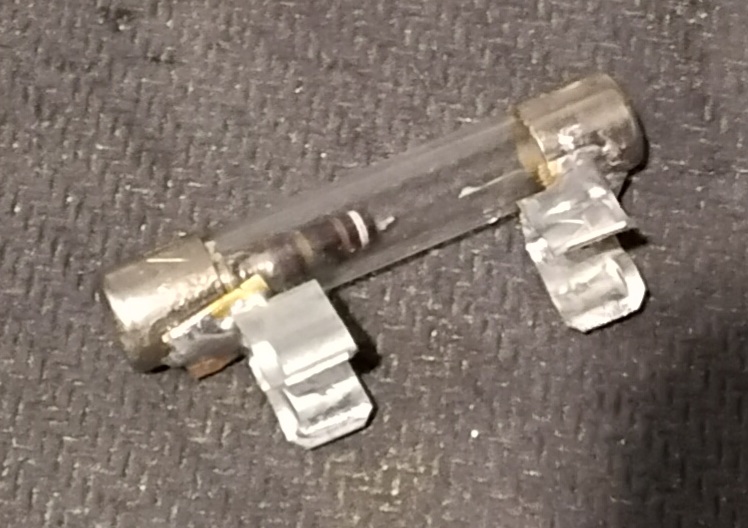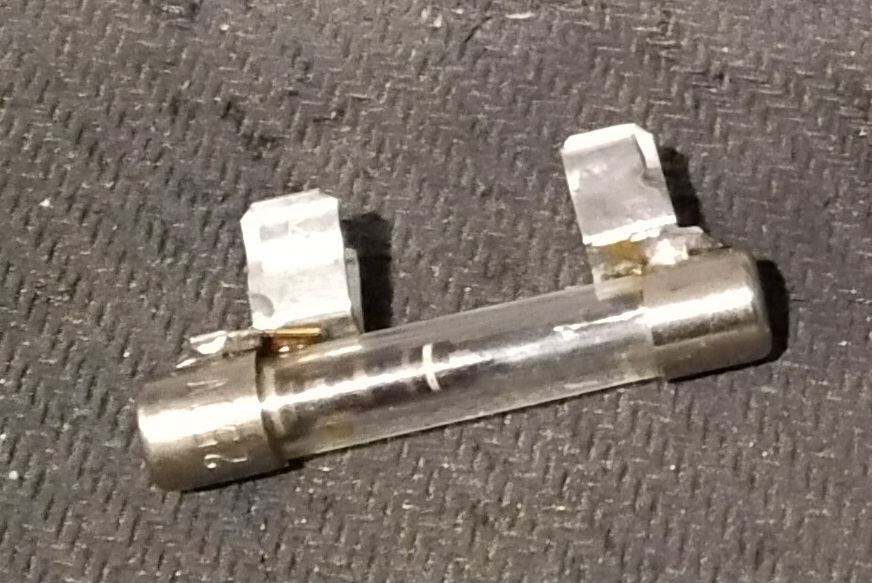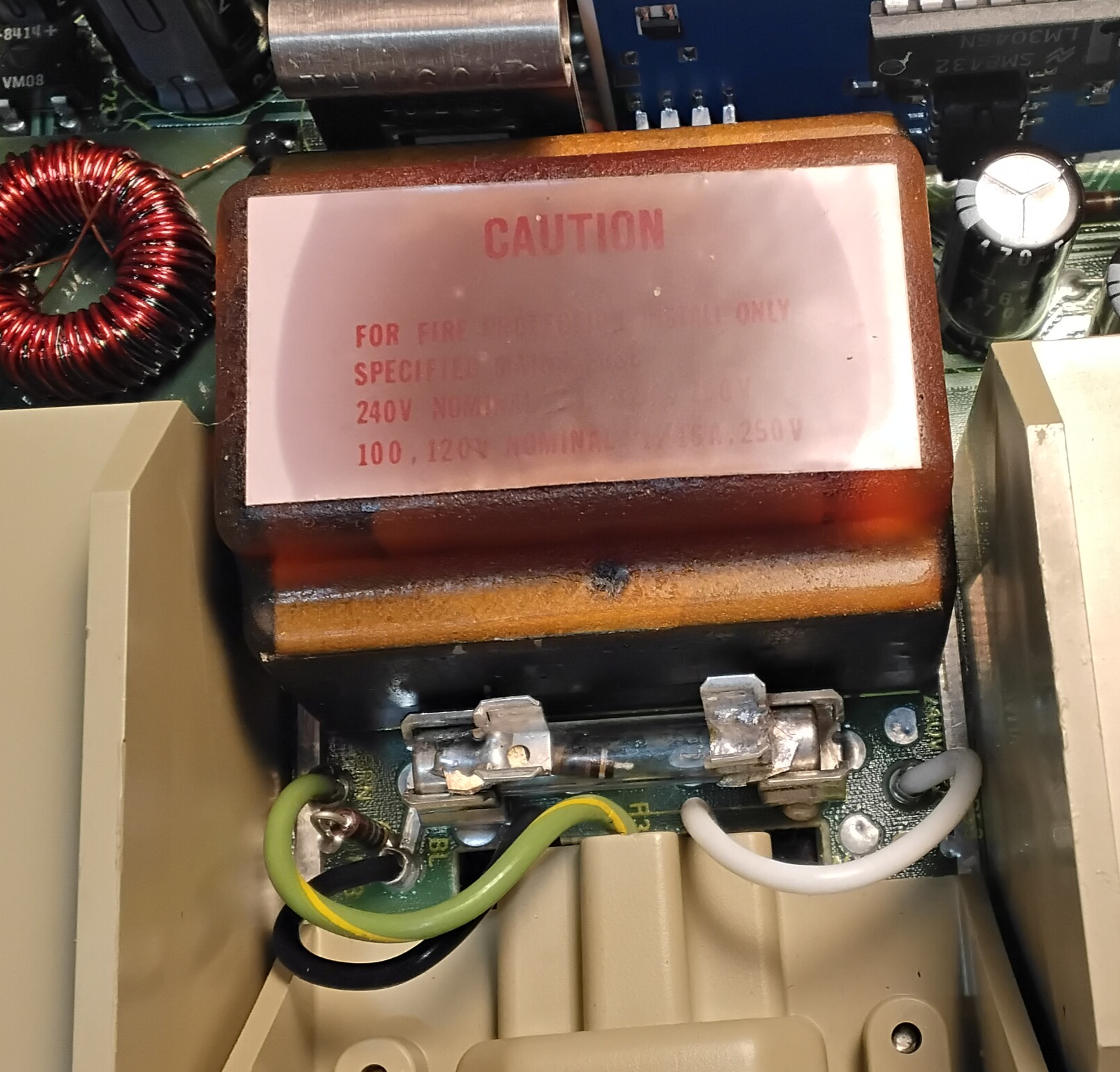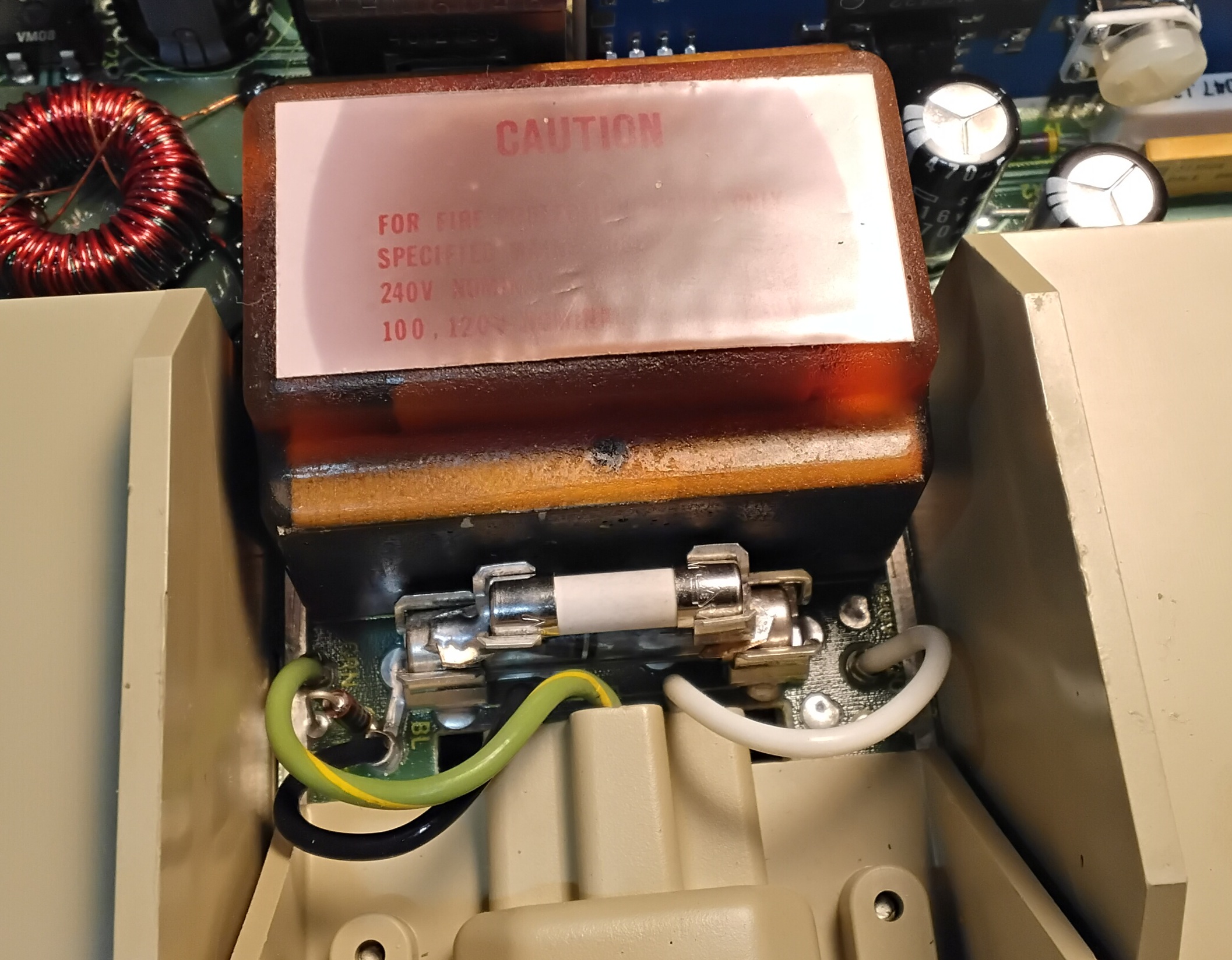
Soldered brass tabs and fuse clips to blown fuse

Other side of blown fuse

Modified blown fuse inserted in the the Fluke 8050A. Ready for a new 32mA fuse

Low cost Slow Blow 32mA 250V 5mm x 20mm fuse installed
Home
Parts List:
Manufacturer Supplier Price (USD) ----------------------------- ------------------------------------ ------------- Item Name Part Number Name Part Number Qty U/M Unit Total Description ---- ------------ ---------------- --------------- -------------------- --- --- ------ ------ ----------------------------------------------------------------------- 1 Bussmann MDL1-16 Fluke 163030 1 EA Fuse, Original, Blown, 8AG, 1/32A (31.25mA) 250V, 0.25 x 1.0 Inch 2 Eaton BK1/S506-32-R Digikey 283-BK1/S506-32-R-ND 1 EA $2.77 $2.77 Fuse, Slow Blow, 32mA 250V, 5mm Diameter, 20mm Length, Glass 3 Keystone 3561 Digikey 36-3561-ND 2 EA $0.31 $0.62 Clip, Fuse Holder, Cartidge, 5mm, 10A 4 Quick Chip RASWLF.031 1OZ Digikey RASWLF.0311OZ-ND 50 MM $0.007 $0.35 Solder, Sn96.5Ag3Cu0.5 (96.5/3/0.5%), 21 AWG, Rosin Activated (RA), off of a $7.06 1 oz Roll 5 K&S 8230 Ace Hardware 5024583 5 MM $0.006 $0.03 Metal, Strip, Brass, 0.016 Inch Thick, 0.25 Inches Wide, 12 Inches long, off of a $1.79 piece of Stock ------ Grand Total $3.77 Unit of Measure (U/M): EA Each MM Millimeter Notes: Any rosin core flux solder would have worked. I only needed about a 2 inch length of solder/flux. Item 4 is shown for my reference. I only needed a small piece of "solderable" metal as shown in the photos. Item 5 is shown for my reference.



